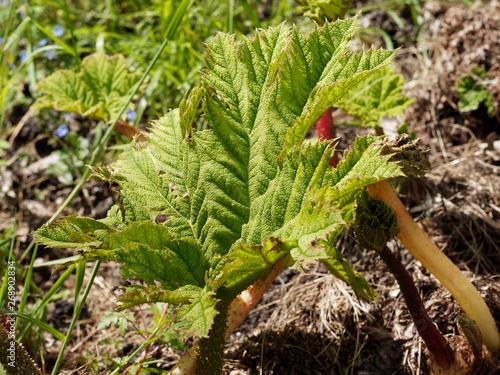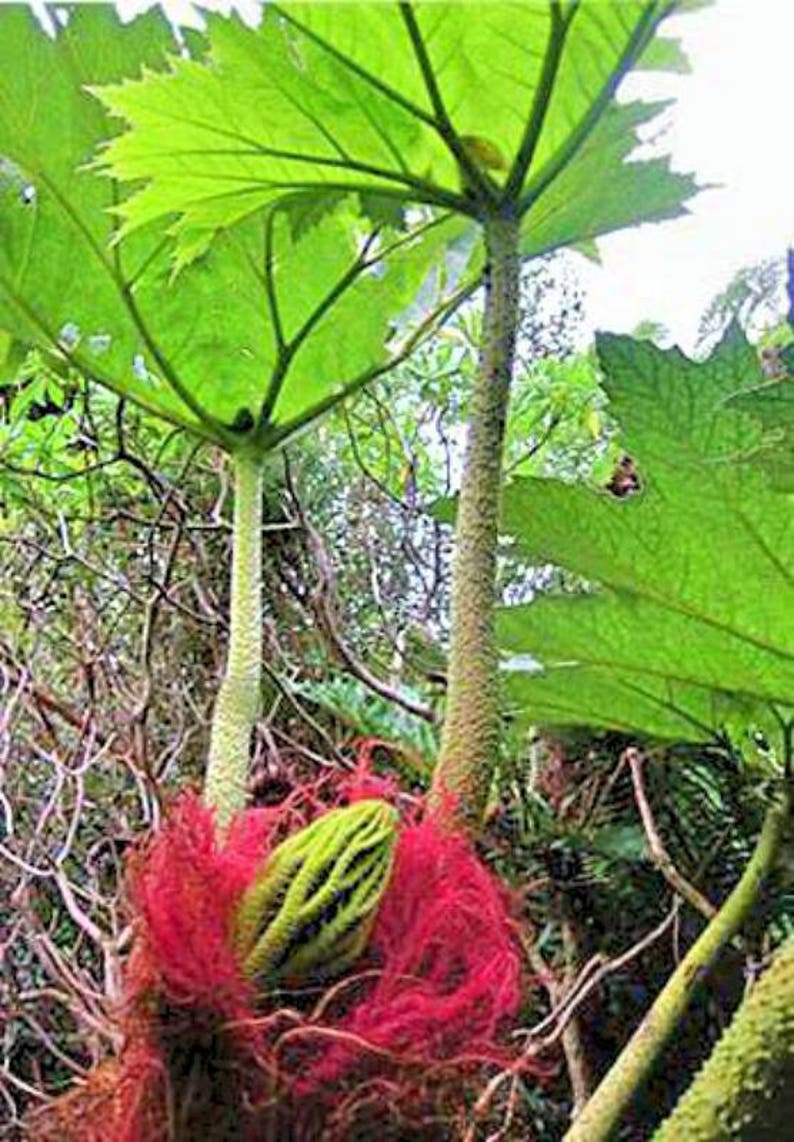Dinosaur Food Plant
Gunnera tinctoria also known as prickly rhubarb is similar and just as big.

Dinosaur food plant. Prepare suitable planting holes spread roots and work soil among roots as you fill in. This dinosaur was an herbivore that fed on low lying plant material. Cut at least 2 inches from the tip of a growing shoot with a clean sharp knife. Gunnera manicata known as brazilian giant rhubarb giant rhubarb or dinosaur food is a species of flowering plant in the gunneraceae family from brazil.
It is a large clump forming herbaceous perennial growing to 25 m 8 ft tall by 4 m 13 ft or more. To plant bare root plants. Sometimes called dinosaur food gunnera manicata the gunneras deeply lobed leaves can get up to 4 feet across and the plant can stand up to 8 feet tall. Food chains show the feeding relationships between.
Water well and protect from direct sun until stable. Plant eaters probably lived on a variety of leaves twigs and seeds which would. These dinosaurs not only ate plants and meat that they scavenged but also quite likely feasted on a variety of different insects. The sauropods also swallowed stones to grinds the food inside their stomach.
What did dinosaurs eat. Both of these prehistoric looking greenery plants will fill in large empty spaces in the corners and edges of your yard and will thrive in boggy ground where other plants roots might drown. Most herbivores like sauropods grew larger than the others because their huge diet of leaves and ferns. Although the exact time of origin for flowering plants is still uncertain the last of the dinosaurs certainly had fruit available to eat.
Place the open end of the dinosaur plant cutting into the soil so that half of the cuttings length is below the soil. Also research revealed that it can swallow huge amounts of plants even without eating them. Some species of cycad have. Well as you can clearly see it all depended on what type of dinosaur they were and what type of teeth they had.
Firm the soil around the cutting to hold it in place. Many of these plants had edible leaves including evergreen conifers pine trees redwoods and their relatives ferns mosses horsetail rushes cycads ginkos and in the latter part of the dinosaur age flowering fruiting plants. Divide a dinosaur plant at any time during the year. Which brings us back to our original question.
Gunnera manicata devon england. Way back during the permian period 300 to 250 million years ago cycads were among the first plants to colonize dry land and these strange stubby fernlike gymnosperms soon became a favorite food source of the first plant eating dinosaurs which quickly branched off from the slender meat eating dinosaurs that evolved toward the end of the triassic period. Plant eating dinosaurs are usually called as herbivorous dinosaurs. Basic food chain principles.
Its presence of beak like snout allowed it to eat by stripping the leaves of plants. Children in year 2 for example will be required to explain how animals obtain their food from plants and other animals using the idea of a simple food web.




